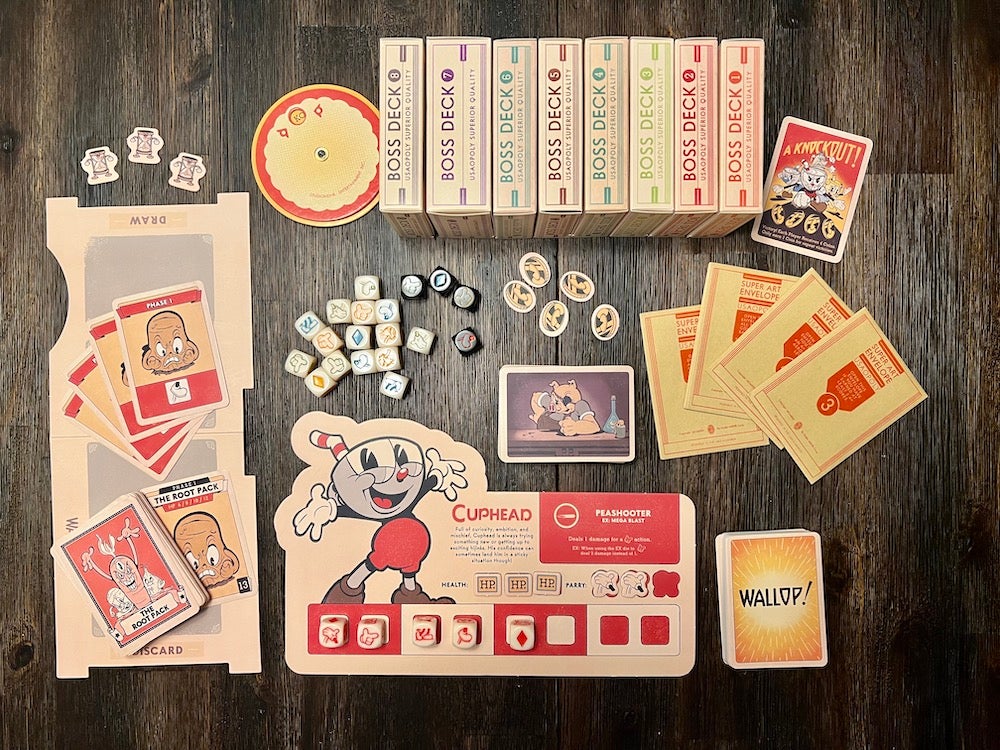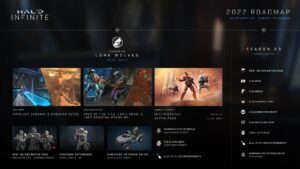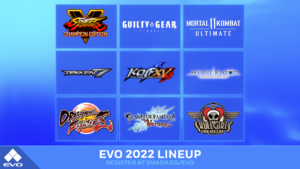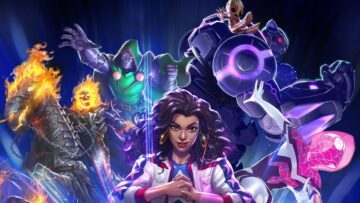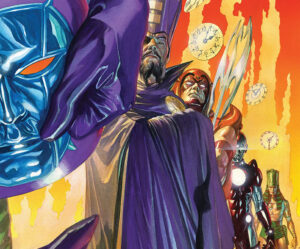When Studio MDHR revealed Cuphead to the world back in 2014, it took the world by storm due to its striking classic animation style and catchy big band-style jazz music. Three years later when it was finally released, it became an instant classic, offering a mix of difficult retro bullet-hell gameplay and memorable presentation. Now, as the Cuphead universe expands further with a dice-based tabletop game, it has enormous cartoon-sized shoes to fill. Cuphead: Fast Rolling Dice Game offers a fun romp through the Inkwell Isles once more, but fails to capture much of the charm that makes Cuphead so iconic.
What’s in the Box
Under the lid you’ll find four large character boards that include Cuphead and Mugman, of course, but also the star of the upcoming DLC, Ms. Chalice, as well as Elder Kettle to round out the group. Each features a large character portrait, description, and blank spots to place dice and other components throughout the game. Additionally, each character has a color-matched set of five Action Dice and one EX Action Dice. Each die contains one of six icons on each face: shoot, parry, jump, dodge, duck, and a diamond.
A large cardboard punch board contains various tokens made in a style that fits the theme, with some icons ripped straight from the Cuphead game, such as the timer and HP icons. Below that, you'll find Boss Deck tuck boxes that contain the unique decks required to face each of the eight bosses. To round out the boss area supplies, you’ll find a foldable boss board, a rotating boss health dial, a plastic boss stand, and 30 Wallop cards.
Additionally, there are four sealed Super Art Envelopes that can only be opened by completing the specific requirement listed on the outside. Once unlocked, the contents can be equipped and used by anyone in the party. Lastly, there’s a large pad of Save Sheets that allow you to “save” your game by notating your character, equipped items, and progress on each of the eight bosses. This system makes it easy to pack up and resume right where you left off without much delay.
While it’s not technically in the box, there is also an optional free companion app available on iOS or Android which can be used to keep track of your time during each round, as well as calculate your score after completing the final phase of a boss deck. I couldn’t imagine playing without it as it removes much of the tedious manual work and even plays a jazz-inspired song during each round.
Rules and How to Play
After reading through the rather short instruction manual to familiarize yourself with the flow of the game, you’re ready to go. Setup is quick and can be done in a matter of minutes. Each player selects their character, grabs their corresponding dice, and starts with three health tokens. Cuphead: Fast Rolling Dice Game is playable solo or with up to four people, however, each character begins the game with the same amount of health and starting Peashooter weapon.
Cuphead: Fast Rolling Dice Game features a lite campaign that requires players to progress through eight bosses in chronological order. You can only move onto the next boss once you’ve successfully bested the previous one. As such, players will begin the fight against The Root Pack using the first boss deck. After successful completion of a boss, players are graded on their performance, from how much health each character has remaining to how many Wallop cards still remain in their hand. This grading system, much like in standard Cuphead, allows for a ton of replayability as you try to score an A+ on each boss.
The general flow of the game is completed in multiple phases and is relatively easy to pick up for new players. Each boss has a number of different phases that players will need to overcome, just like in Cuphead proper. Boss phases use a small section of the greater boss deck, creating smaller decks that are used only during that specific phase and contain unique mechanics to add some flavor to the otherwise standard attack sequence. Once players are ready to start, three boss cards are flipped over and added to the boss board in the order they were revealed. These telegraph the “attacks” the boss will perform during that round, and players will need to react accordingly once the round timer begins by rolling their Attack Dice.
Each boss card revealed during a given round features one or two icons that correspond to icons found on the Action Dice. The goal for the players is to roll their dice in quick succession and match the dice pictures to those icons in the allotted time frame. Each icon matched means they successfully avoid the attack and any damage that would result from it. If players are feeling extra brave, they can assign an extra die to attack the boss, with the goal of whittling its health down to zero as quickly as possible.
While this sounds easy, it relies heavily on luck, and RNG plays a huge factor in the overall gameplay. This is really where it deviates from the source material as in the original Cuphead, you could practice and learn boss patterns to eventually get better. In this dice game variant, you’re at the mercy of a one-in-six dice roll every time you throw, with almost no way to actually improve your overall performance short of rolling faster, identifying dice icons more quickly, and assigning them to your board more effectively — all of which aren’t really feasible after a certain point.
While Cuphead: Fast Rolling Dice Game is playable solo, it becomes slightly easier with each successive player added. Sure, the bosses feature more health to compensate for the added headcount, but the fact that every character uses the same set of dice means the odds are the same for everyone. This spreads out the variance in dice rolls and allows for more consistent damage to the boss during each round — meaning rounds don’t drag on as long and generally end in victory for the players. Plus, characters can be revived fairly easily after being knocked out, allowing for the fight to continue. Some of the bosses require near-perfect rolls at times, making it a much more difficult experience if you plan to play through the campaign by yourself.
Each round of the boss phase continues until either every player or boss loses all of their health. If the boss deck runs out of cards, the group must shuffle the current boss deck to create a new set of randomized attacks while also collecting a time token — something that negatively affects the final grade upon completion. After each boss KO, players move to the next phase, until they eventually reach the final Knockout! card, where they can collect their spoils, receive their final grade, and unlock new purchasable items for the shop before cracking open the next boss deck.
The main strategy in Cuphead: Fast Rolling Dice Game employs a similar risk-reward mechanic as something like Yahtzee, but on steroids. As you roll, you have the option to spend as many extra dice as you can afford to attack the boss, limiting the number of future dice you’ll have available for the remainder of the round, thus reducing your overall chance of blocking future attacks. It’s these quick moment-to-moment decisions that really make it shine, and where most of the fun is had.
One of my biggest complaints with this dice game variant, though, are the actual bosses themselves. In Cuphead, boss fights are big spectacles with gorgeous animation, unique mechanics, and always accompanied by a stellar soundtrack. Most of what makes Cuphead so special is missing here as boss mechanics are largely the same and boil down to minor variations on standard rules, or gimmicks like requiring your assigned dice to be stacked on top of one another in order to be counted. Obviously, it’s hard to translate an audiovisual experience like Cuphead 1:1, but so much of the original game’s charm is lost here.
What Cuphead: Fast Rolling Dice game does get right, though, is the sheer chaos and sense of panic you’d expect from a bullet-hell style game. It’s largely a fun solo experience that’s made better with friends — as most games are. If you’re a fan of Cuphead, this is definitely worth checking out. If not, you may find it to be a fairly average dice game with some cool retro artwork on the cards.
Where to Buy
Cuphead Fast Rolling Dice Game is available now for an MSRP of $49.99, though it may be priced lower or higher at any given retailer.
Source: https://www.ign.com/articles/cuphead-fast-rolling-dice-game-review
- Action
- All
- Allowing
- Animation
- app
- Apple
- AREA
- Art
- average
- Biggest
- board
- Box
- brave
- Campaign
- checking
- Collecting
- complaints
- components
- contents
- continue
- continues
- Creating
- Current
- damage
- delay
- Dodge
- expands
- experience
- Face
- familiarize
- FAST
- Feature
- Features
- fights
- Finally
- First
- flow
- Free
- fun
- future
- game
- gameplay
- Games
- General
- Group
- Health
- here
- How
- How To
- HP
- HTTPS
- huge
- i
- ICON
- improve
- IT
- jump
- large
- LEARN
- Long
- Luck
- Making
- Match
- May
- Mechanics
- move
- MS
- Music
- offering
- Offers
- open
- Option
- order
- Other
- Panic
- People
- performance
- plastic
- play
- player
- players
- Playing
- Plus
- punch
- Randomized
- React
- Reading
- requires
- retailer
- Retro
- Revealed
- review
- rng
- Roll
- rolls
- rounds
- rules
- sense
- set
- shine
- Shop
- Short
- SIX
- small
- smaller
- So
- spend
- start
- Stellar
- Storm
- Strategy
- successful
- system
- The
- the dice
- The Flow of the Game
- The Source
- the world
- theme
- time
- token
- Tokens
- Ton
- top
- track
- unique
- What
- Work
- world
- worth
- years
- zero
